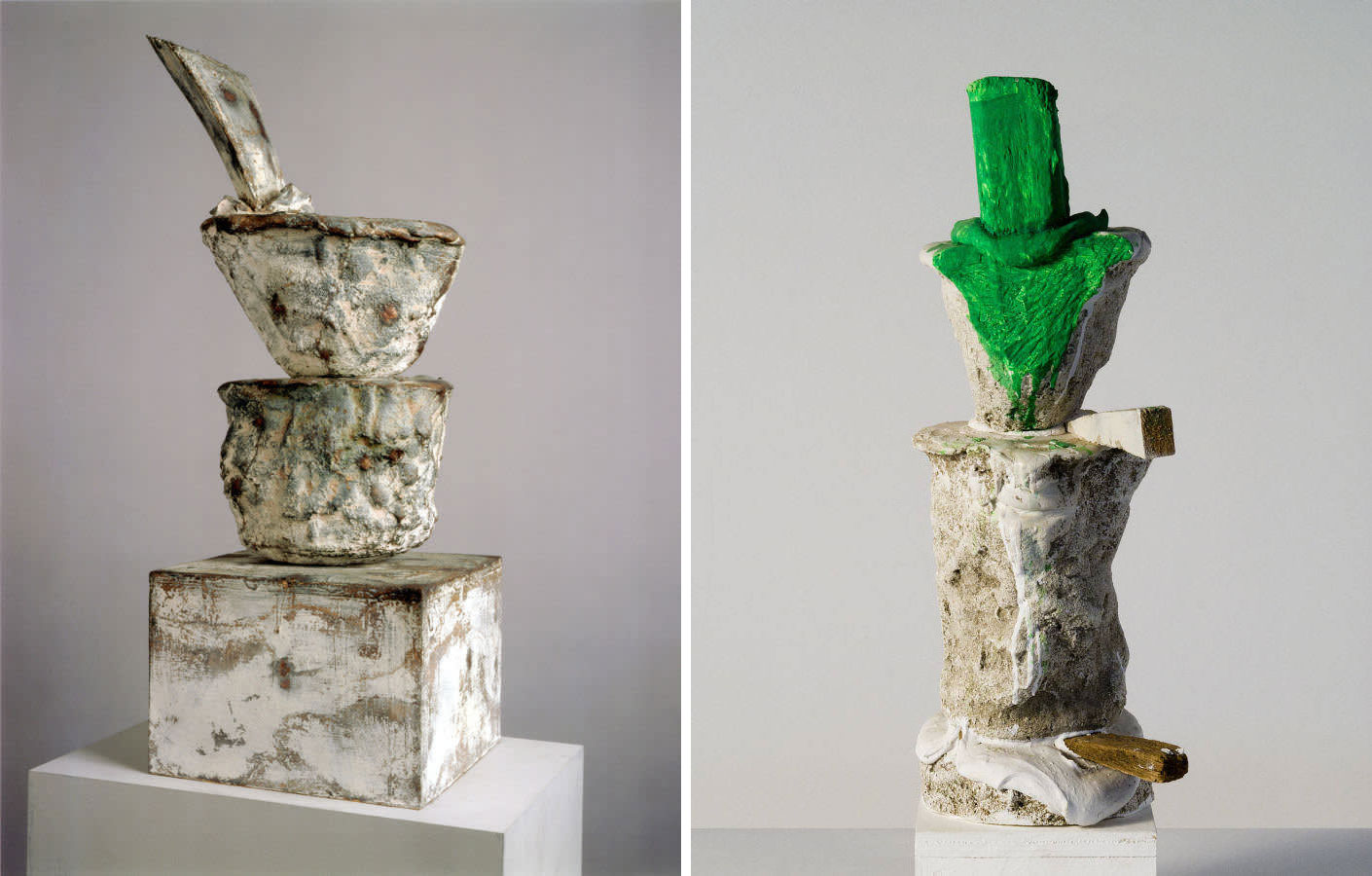ART-PRESENTATION:Cy Twombly-Sculpture

Cy Twombly with his close friends Robert Rauschenberg and Jasper Johns, ranks among the leading exponents of a generation of artists who broke away from Abstract Expressionism in the ‘50s to devise their owndistinctive and highly influential visual idioms. Cy Twombly at a time when the center of the art world was shifting from Paris to New York, he decided to move in the opposite direction, settling down in Rome.
By Efi Michalarou
Photo: Gagosian Archive
The exhibition “Sculpture” marks the publication of the second volume of the catalogue raisonné of sculptures by Cy Twombly, edited by Nicola Del Roscio, President of the Cy Twombly Foundation, and published by Schirmer/Mosel. Twombly is best known for profoundly original paintings and drawings, tensely balanced between expressively abstract and suggestively pictorial impulses that merge drawing, painting, and writing. He began to make sculpture at a young age, and object making has remained an essential, if somewhat less examined, aspect of his art. The earliest incorporating metal doorknobs from his parents’ house, demonstrates his interest in modern European art, particularly the assemblage techniques and use of found objects pioneered by the Dada and Surrealist movements. From 1959 to 1976, Twombly worked exclusively on canvas and paper. Returning to sculpture at mid-career, he continued to combine the textures of found objects with the rawness of weathered wood. Twombly made his sculptures from found materials such as plaster, wood, and iron, as well as objects that he habitually used and handled in the studio. From 1946 onward, he created many assemblages, though they were rarely exhibited before the 1997 publication of the first volume of his catalogue raisonné. Often modest in scale, they embody his artistic language of handwritten glyphs and symbols, evoking narratives from antiquity and fragments of literature and poetry. Many of Twombly’s sculptures are coated in white paint, which unifies and neutralizes the assembled materials and renders the newly formed object into a coherent whole. In referring to white paint as his “marble,” Twombly recalls traditions of Egyptian, Greek, and Roman sculpture while also subverting marble’s classical connotation of perfection through his roughly painted surfaces. The intimate scale of these works, together with their textural coats of paint, underscores their fundamentally haptic nature. Some of Twombly’s sculptures allude to architecture, geometry, and Egyptian and Mesopotamian statuary, as in the rectangular pedestals and circular structures of “Untitled” (1977) and “Chariot of Triumph” (1990). “Untitled (In Memory of Álvaro de Campos)” (2002) comprises a rounded wooden trough stacked with a rectangular box, an elongated mound, and a vertical wooden board, all accumulating into a form that resembles a headstone or cenotaph. Thickly daubed in white, the sculpture bears the titular inscription scrawled in the graffiti-like hand so typical of Twombly’s drawings and paintings, and below it, the words “to feel all things in all ways”. Drawn from a poem by Álvaro de Campos (one of Portuguese poet Fernando Pessoa’s pseudonyms), the inscription suggests the legibility of the sculpture itself, and positions the three-dimensional object as a surface to be worked on. In 1979, Twombly began casting some of his assemblages in bronze. The first iteration of “Untitled” (2002), on view in this exhibition, was made in 1955, soon after his return to New York from Europe and North Africa. Like other works from this period, this sculpture makes reference to the ancient artifacts the artist encountered in his travels. Consisting of bundled sticks, it evokes an object of private devotion or fetish. By casting this work in bronze in 2002, Twombly literally and figuratively substantiated the small sculpture into something like an archeological treasure recovered from the past. To mark the completion of all volumes of the Twombly catalogue raisonné, Gagosian Davies Street, London, will host a store for the duration of the exhibition, selling Twombly posters, prints, rare books, and the catalogue raisonné itself.
Info: Gagosian Gallery, 20 Grosvenor Hill, London, Duration: 30/9-21/12/19, Days & Hours: Tue-Sat 10:00-18:00, https://gagosian.com



